The tragedy in Nepal: a terrible report from the scene
Categories: Asia | Catastrophes
By Pictolic https://pictolic.com/article/the-tragedy-in-nepal-a-terrible-report-from-the-scene.htmlEyewitness Dmitry Shatrov says: On April 25, 2015, around noon, Nepal was hit by the first two strikes with a magnitude of eight points. Everything that could fall fell immediately. Over the next three days, more than a hundred "small" shocks completed the overall picture of destruction. As a result, the historical part of Nepal no longer exists. Rare surviving stupas and pagodas, partially preserved palaces, but mostly the UNESCO heritage has turned into a mountain of broken bricks. The same painting in Kathmandu, Patan, Bhaktapur and other cities across the country.
I fell in love with Nepal too much after eight years of tracks, filming and working in this country, and out of respect for the dead, I will try not to show trash, blood and dead bodies, although I have seen everyone these days. Now dozens of funeral pyres are burning in Pashupati - the crematorium built last year simply cannot physically cope with the flow of bodies. Under the cut are more than forty pictures from the central part of Kathmandu, taken on April 25 and 26.
(Total 42 photos)
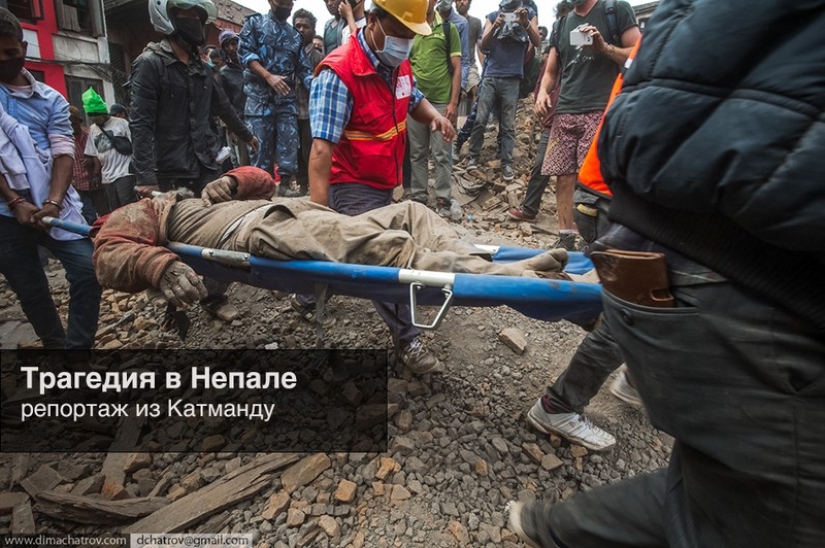 Source: JJournal/dima-chatrov
Source: JJournal/dima-chatrov
My group of “photoplanetists” is alive and well: the earthquake caught us halfway to Kathmandu, we had just finished the track and were returning to the capital. In the next three days, I sent the guys home one by one, and yesterday I returned myself.
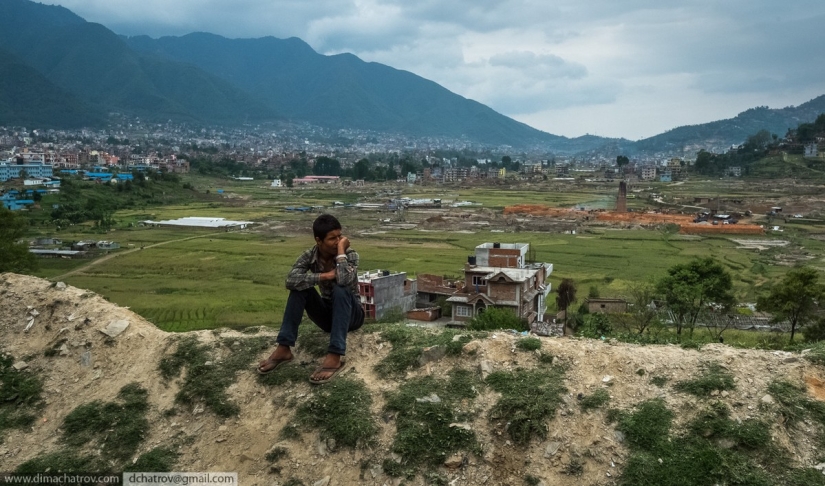
1. The first thing you pay attention to when entering the Kathmandu valley is the pipes of brick factories that have collapsed inside. None survived.
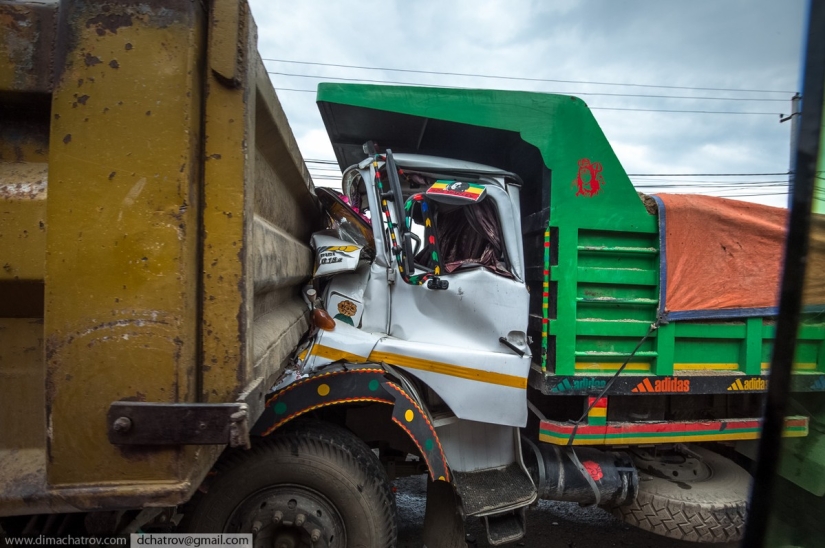
2. Heavy traffic on the road to the pass entrance to the valley provoked such accidents during the first shocks.
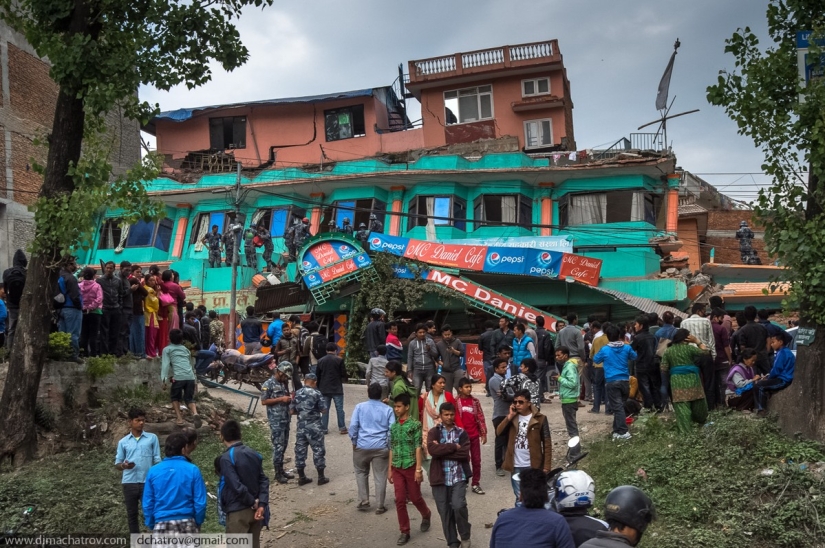
3. It seems that the elements hit the most flimsy buildings pointwise. Poor-quality Nepalese hotel "remake" collapsed like cardboard boxes.
- What are you, bitch, spoiling your karma ?! I ask.
Silent, shaking his head, bastard. Smiling absently.
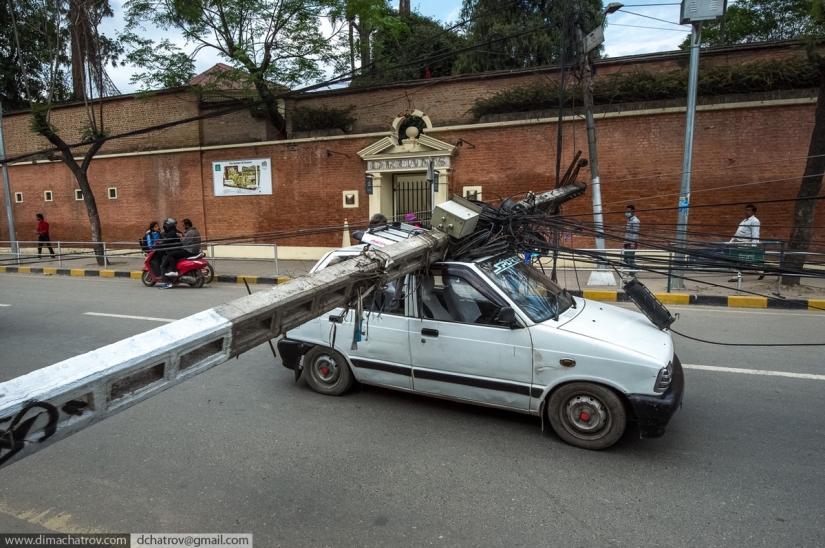
4. A taxi took a hit from a concrete pillar right at the entrance to Thamel. Opposite is the Botanical Garden and the Kaiser Cafe. By the way, immediately after the tragedy, Nepalese city taxi drivers raised the prices for their services by three to four times.
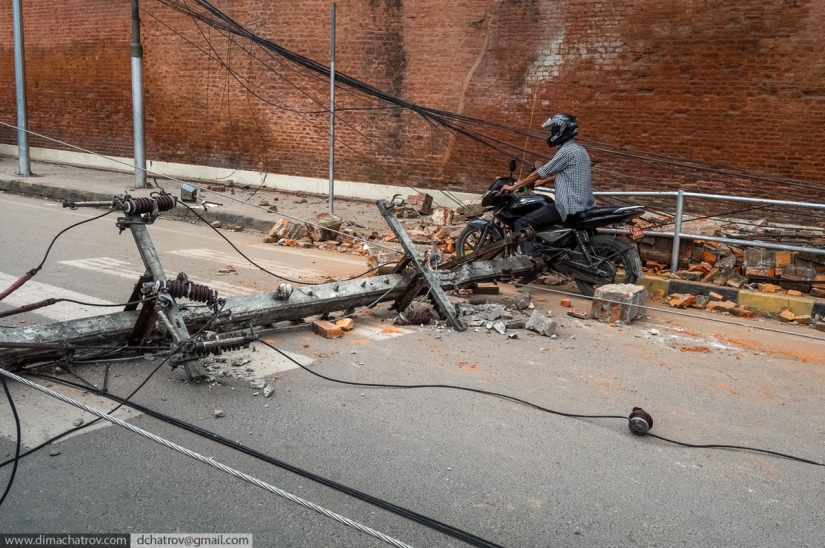
5. Light and communication in Kathmandu "lay down" immediately. Mobile communications appeared in fits and starts until a new blow at three in the afternoon on April 26, then fell for a day and finally earned on April 29. Electricity was partially restored on April 28 and 29, and there is electricity in the city on April 30.

6. A fallen wall in the courtyard of our hotel in Thamel.
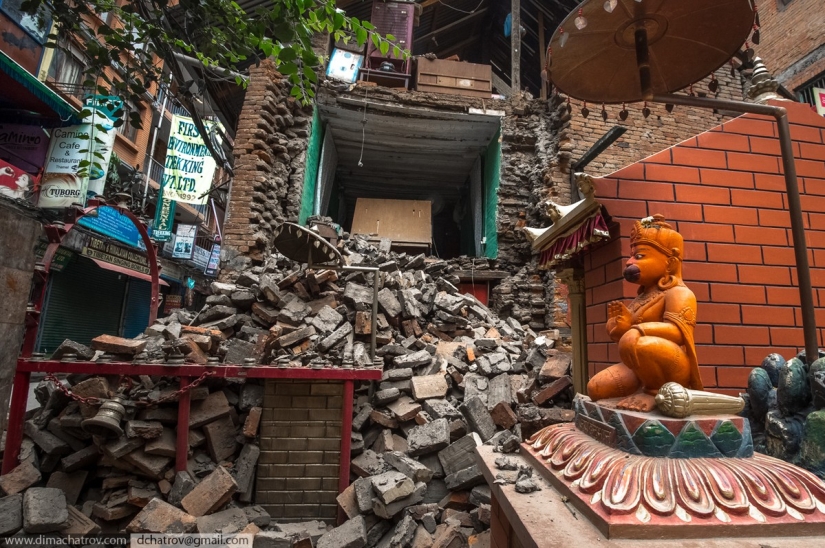
7. One of the residential buildings in the central part of Thamel.

8. Pavement "Mandala Street" in Thamel (April 25). People closed shops, shops and houses, and hurriedly left the city.
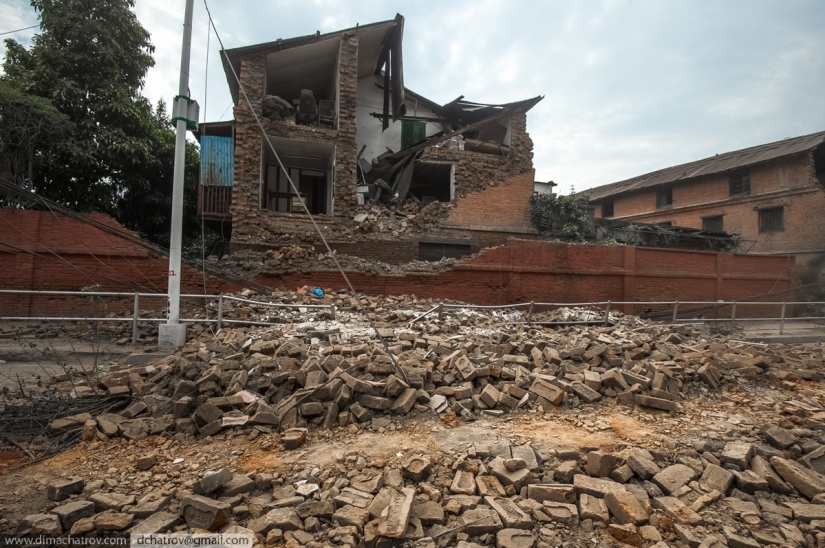
9. Center of Kathmandu. Houses along the road.
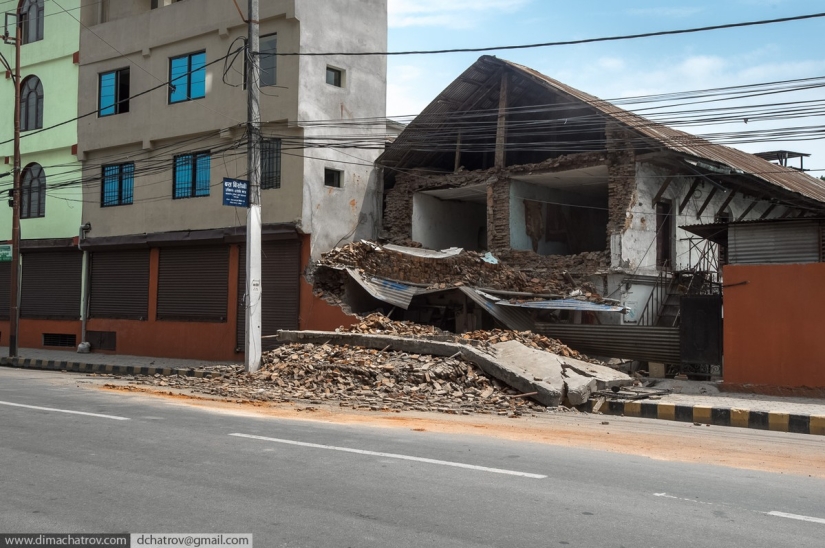
10. Center of Kathmandu. Houses along the road.
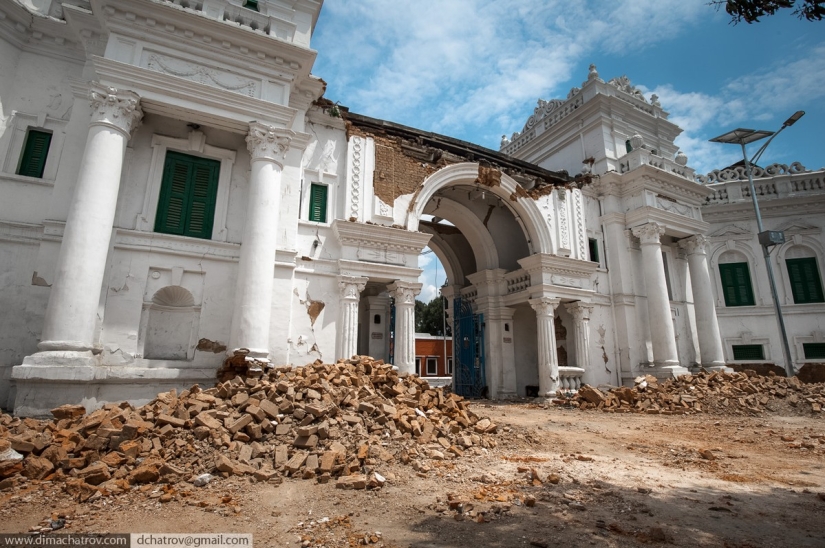
11. Former gate of the former royal palace.
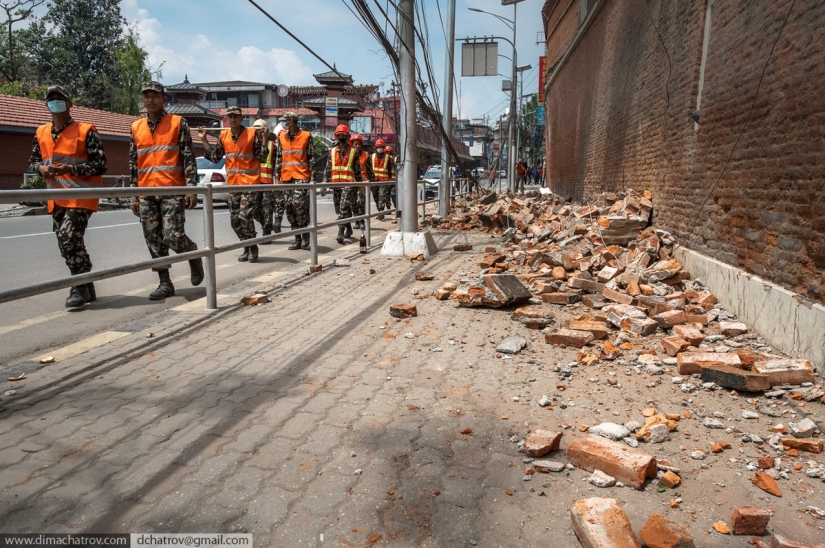
12. Army in an attempt to stop the destruction and chaos. Morning April 26th.
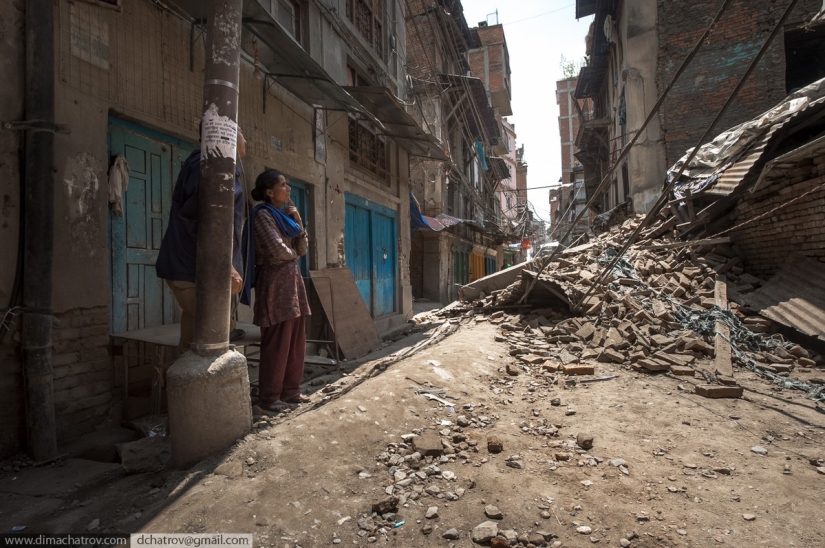
13. The historical center of Kathmandu has always been famous for its very dense, heaped buildings. Fallen houses blocked the streets, often forming a "domino effect".
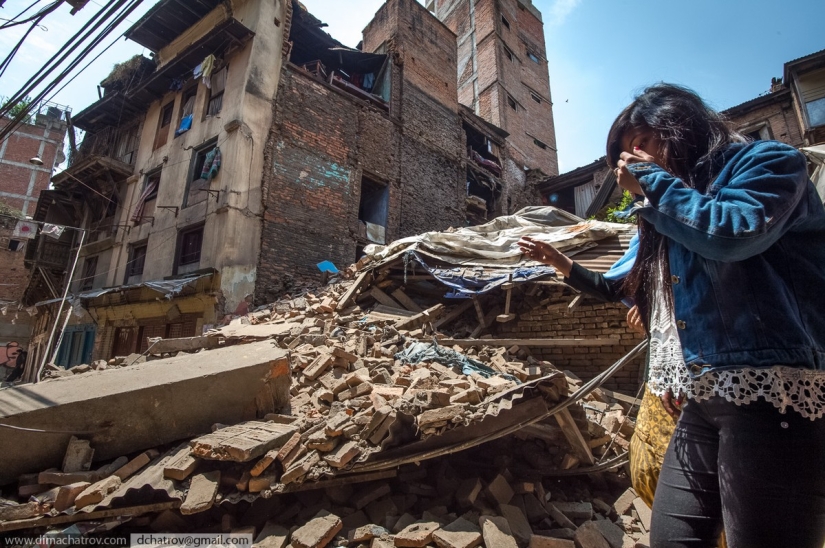
14. Historic center of Kathmandu. On the way to the Durbar.
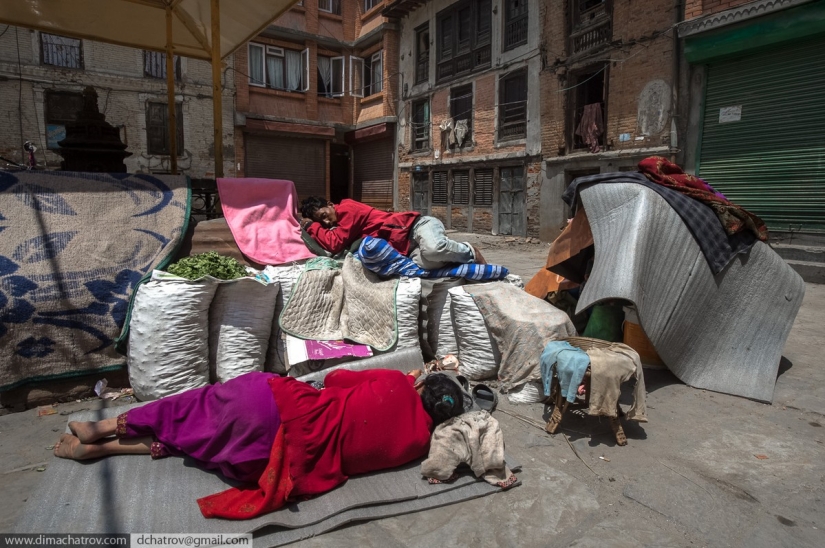
15. People lived for several days in yards, in stadiums, just in open areas, fearing new shocks.
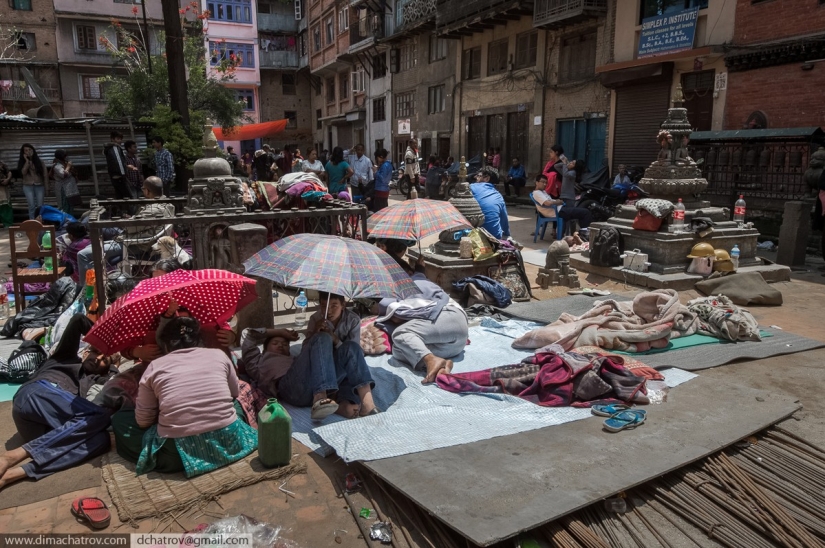
16. An impromptu camp in the historical part of Kathmandu.
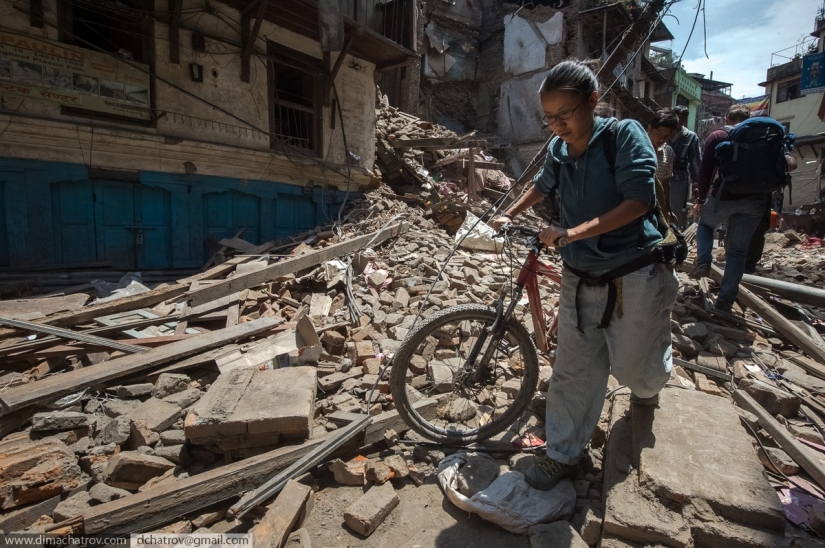
17. Kathmandu. On the way to the Durbar.
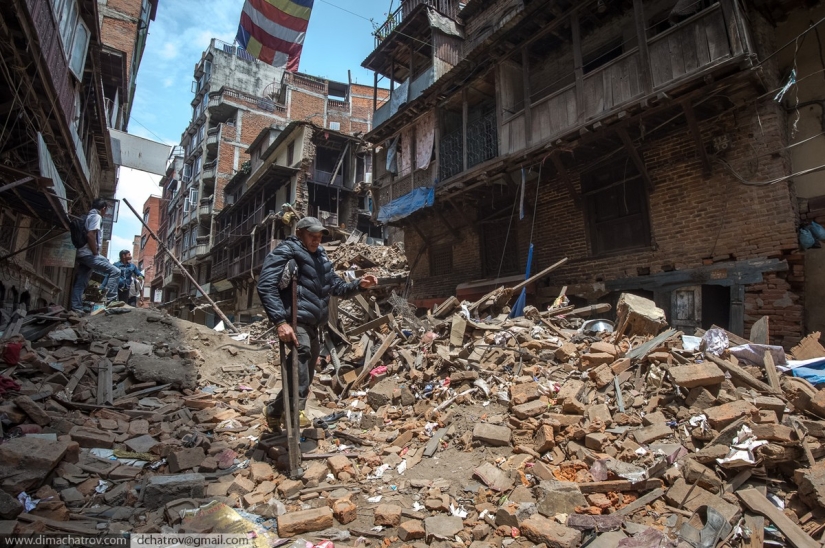
18. Kathmandu. On the way to the Durbar.
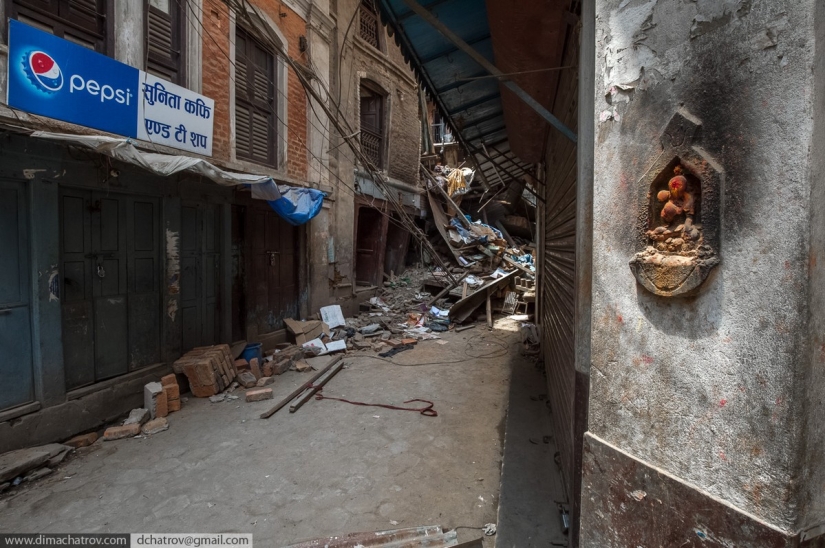
19. Kathmandu. On the way to the Durbar.
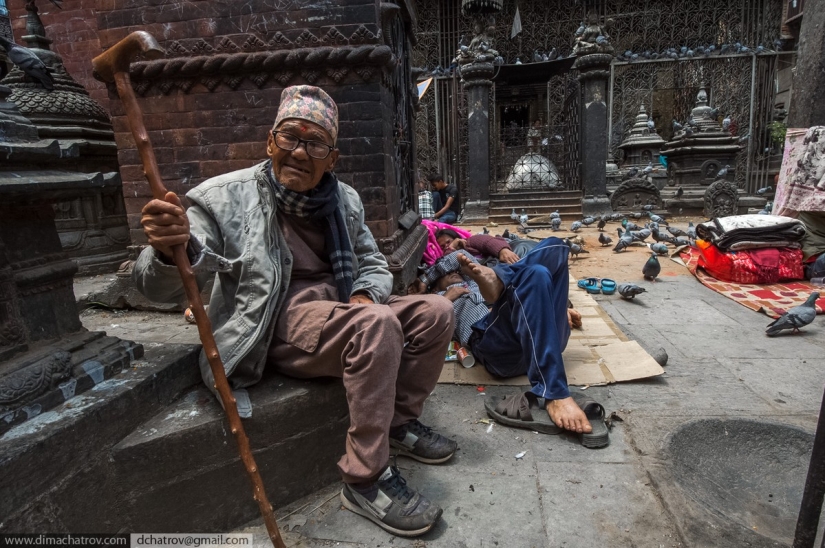
20. "Pigeon Temple" in the historical part of Kathmandu.
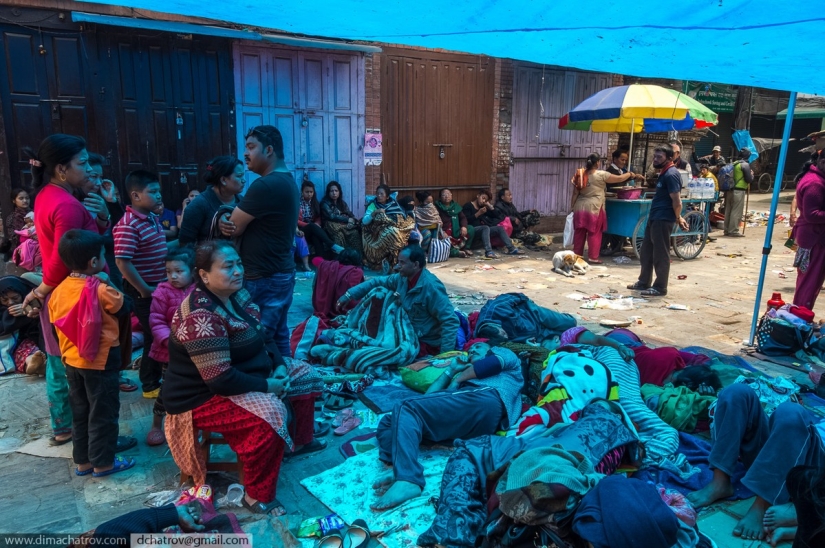
21. An impromptu camp in the historical part of Kathmandu.
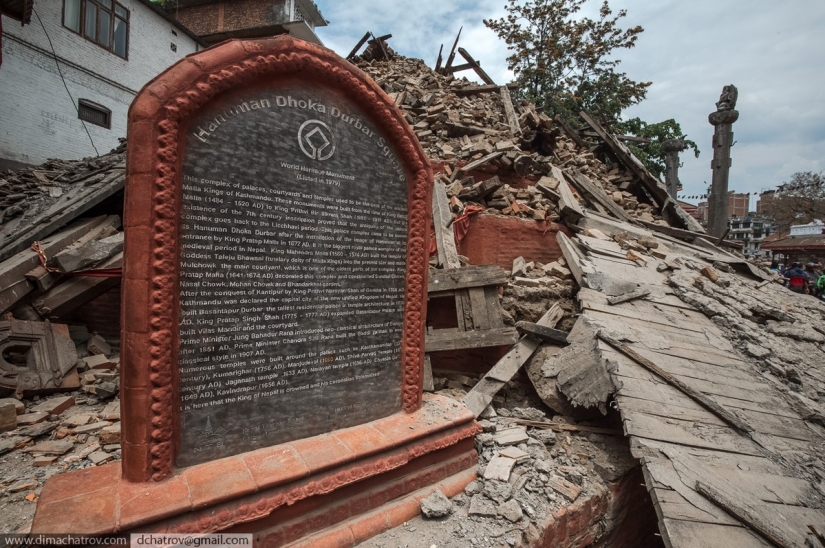
22. Durbar. Former world heritage.
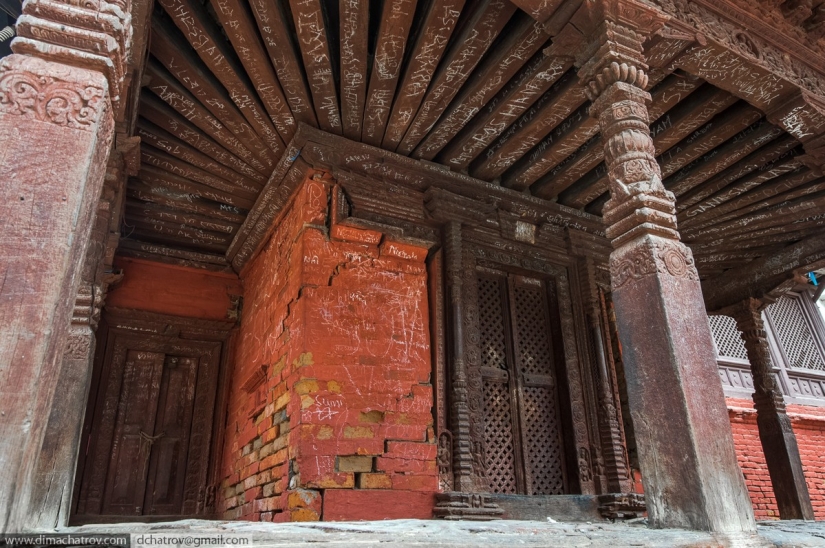
23. Durbar. Rare preserved pagodas.

24. Durbar. Consequences of the first two aftershocks (morning of April 26).
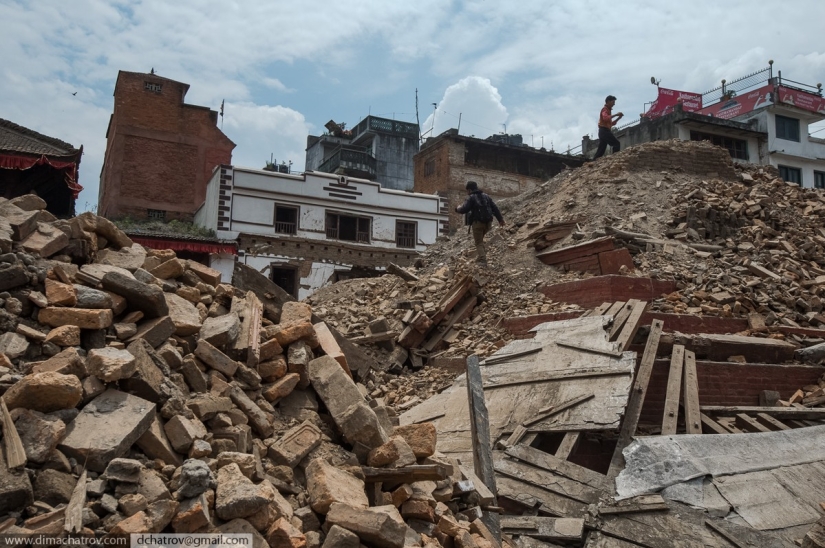
25. One of the former pagodas at the Durbar.
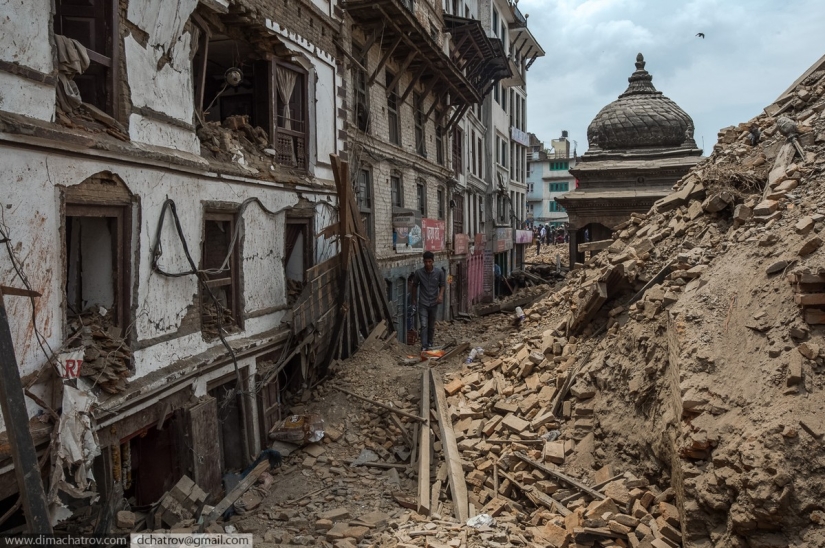
26. One of the former pagodas at the Durbar. View from the Kumari Palace.
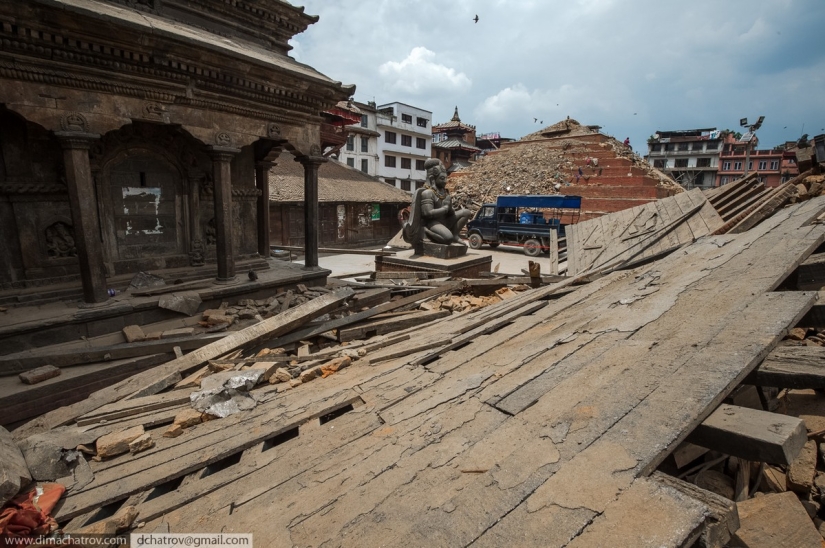
27. Durbar. View from the Kumari Palace.
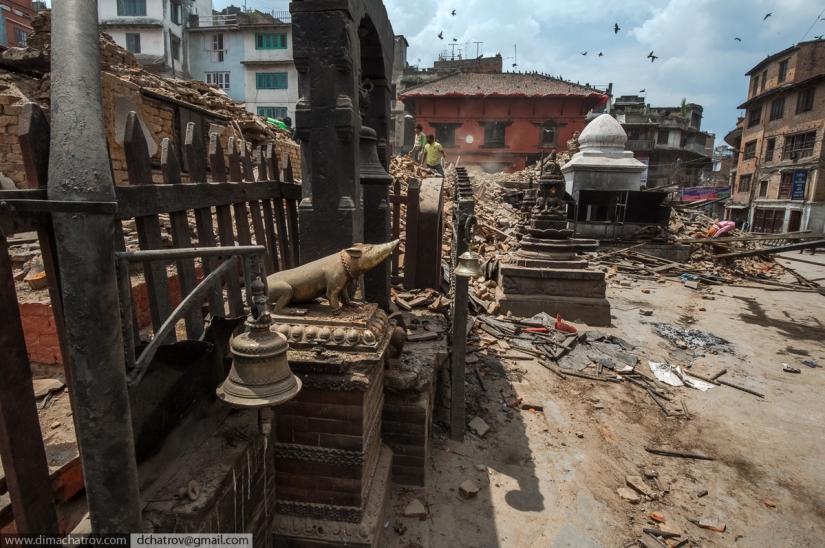
28. The famous rat is the "vahana of Ganesha." There used to be a temple complex here.
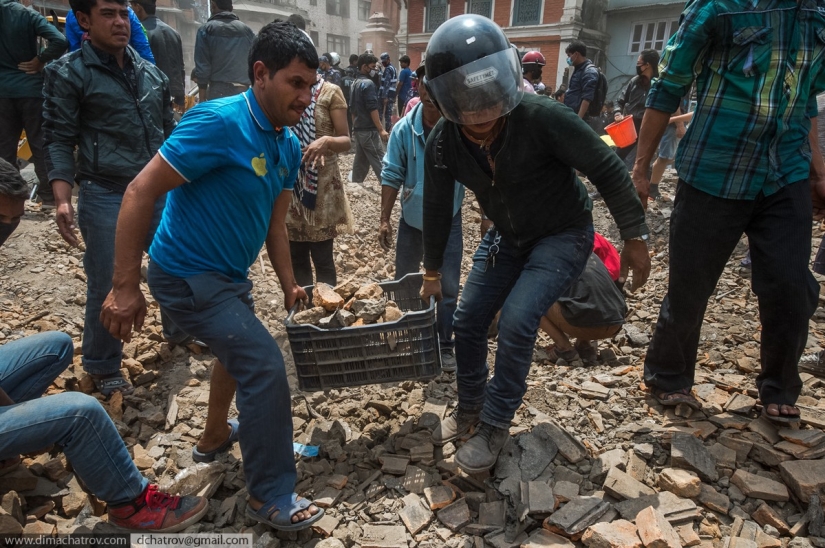
29. Debris is being sorted out. People sort through broken bricks in search of cavities where survivors can remain.
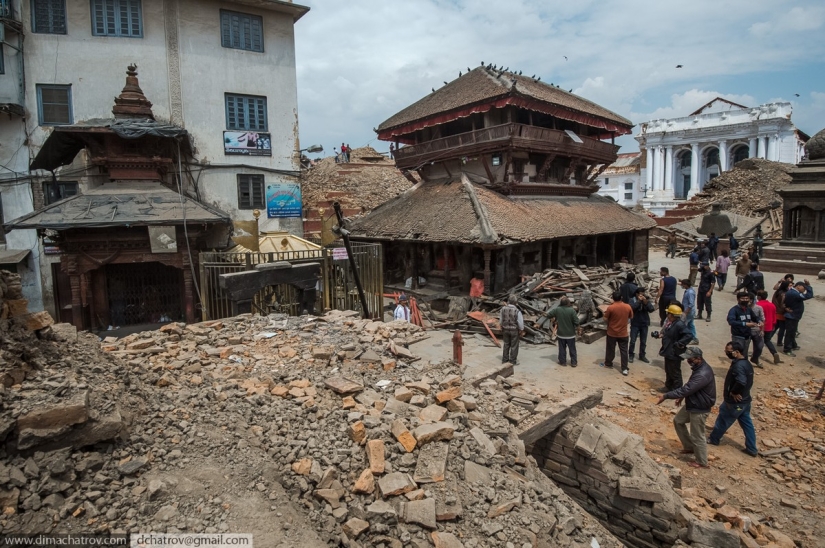
30. View from the side of the Wakhan Ganesha temple. Shooting April 26, around 3 p.m. At that moment, a new shock of more than five points came, bringing down several more houses along the perimeter of the Durbar.
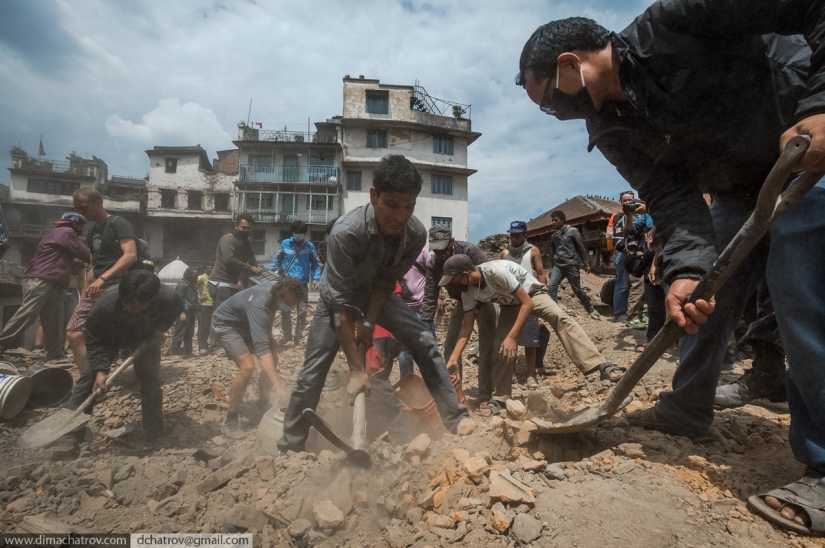
31. Debris is being sorted out.
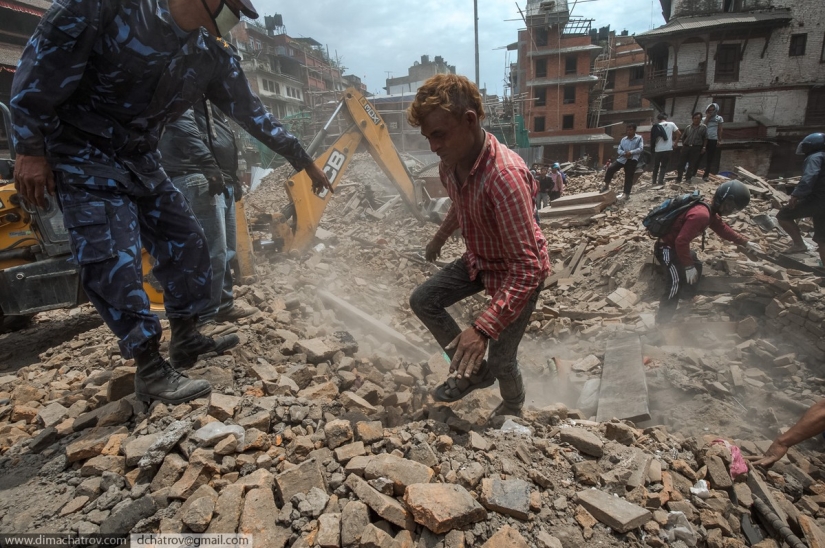
32. Debris is being sorted out.
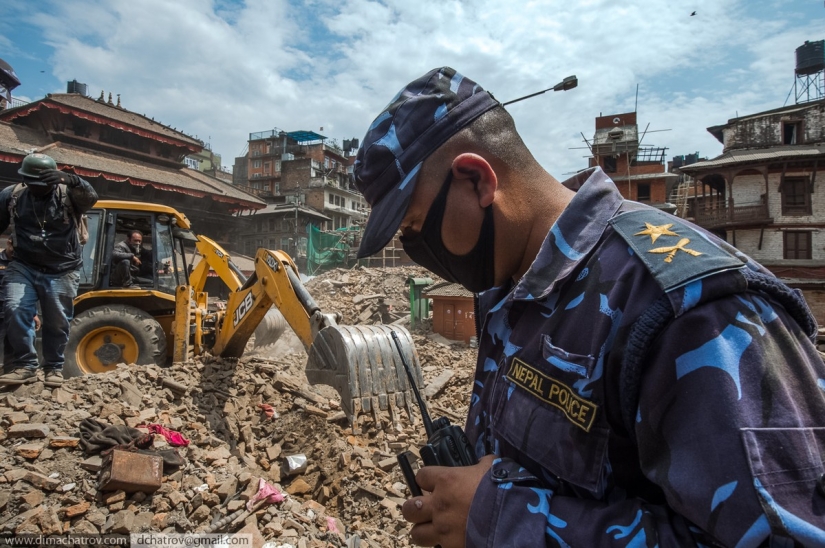
33. Police, army, Nepalese, tourists - all work shoulder to shoulder.
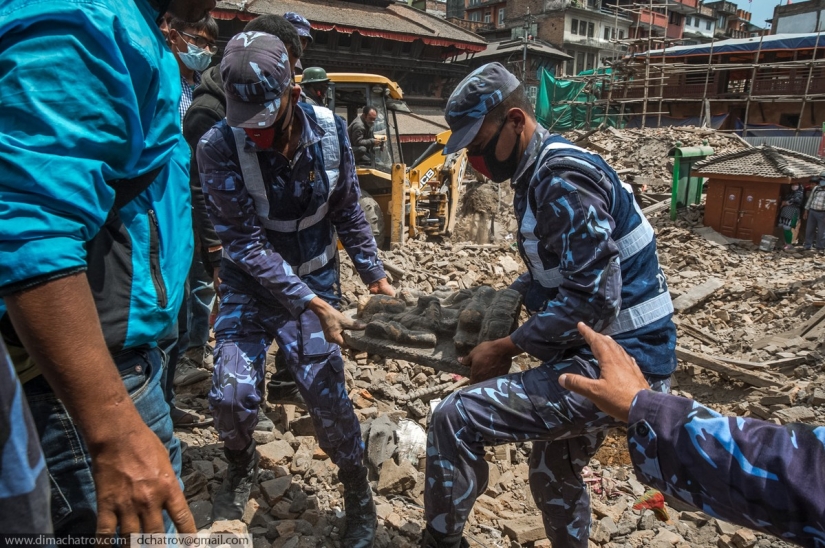
34. Rescuers take out the surviving relics, put them in a separate place.
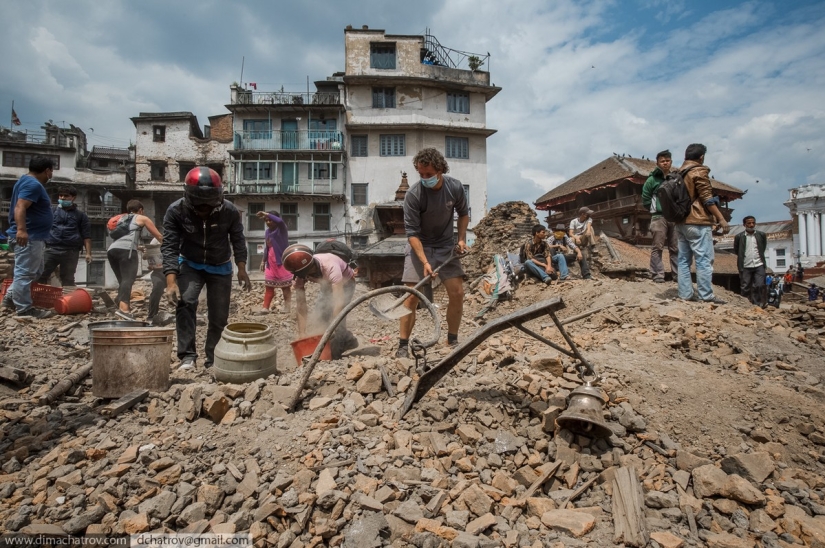
35. Debris is being sorted out.
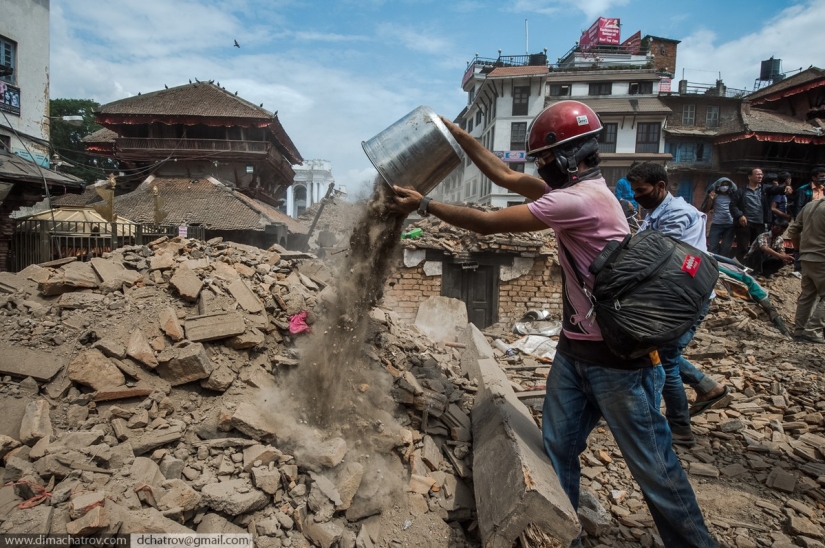
36. Debris is being sorted out.

37. Debris is being sorted out.
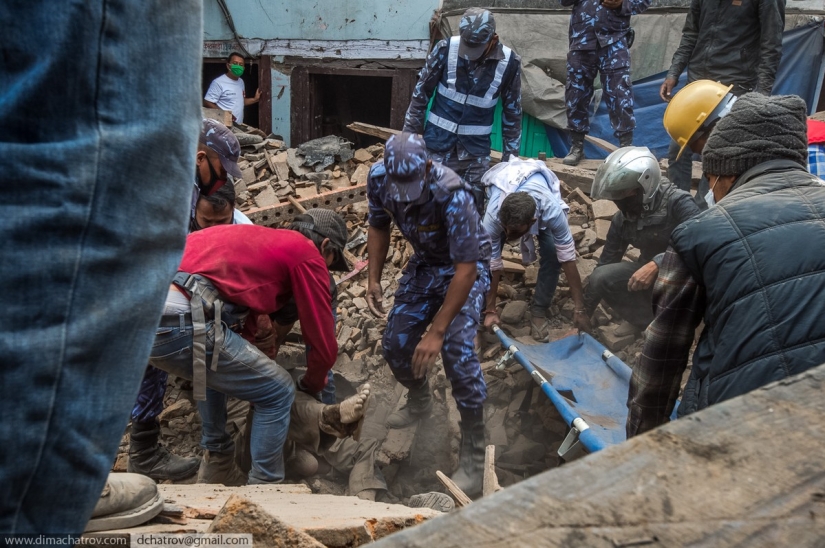
38. Only bodies are pulled out from under the rubble ...

39. The wall of the palace on Durbar until three in the afternoon on April 26 ...
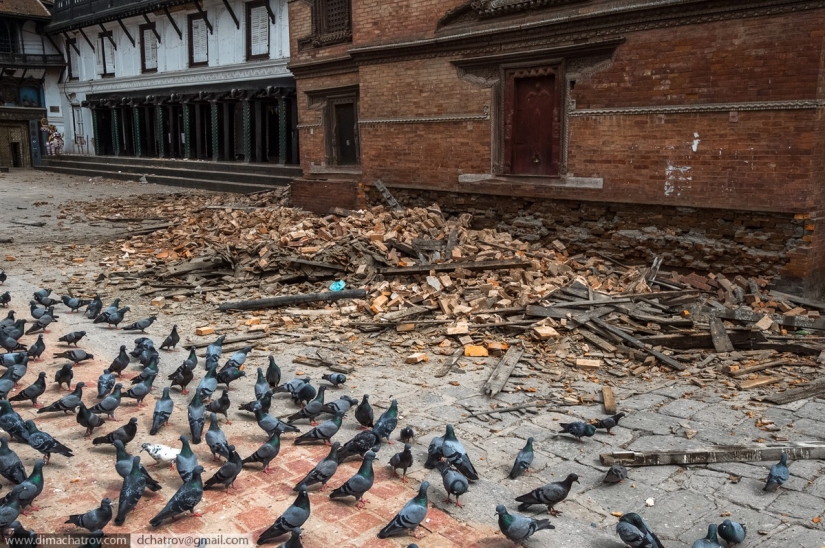
40. ... and it is at half past three, after a new push.
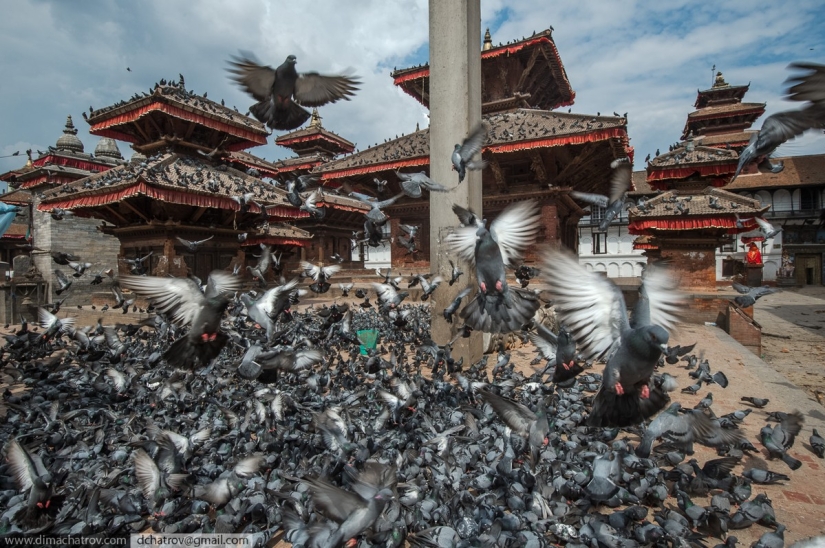
41. Thousands of pigeons flocked to the Durbar, spoiled by Nepalese handouts and tourists, now wondering why people suddenly didn’t care about them.
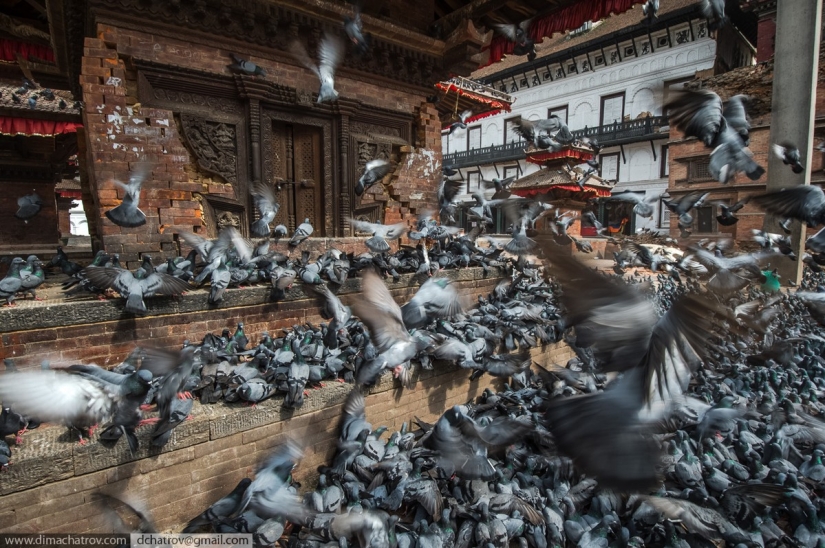
42. Another partially surviving pagoda ...
The same picture in other historical city centers, from Patan to Bhaktapur. Colossal destruction throughout the country, which is now only beginning to be talked about. All my Nepalese friends and partners left Kathmandu for their native villages, to look for relatives and restore what was lost.
I want to say to those who are still looking for their relatives and friends who have gone to the mountain tracks: people will certainly show up as soon as the rescuers restore mobile communications. From Lukla to Dunce, tourists can neither write nor call.
Enough on this. Further I will show the Nepal that I know and love, even if some part of it will never return. Also, I'm glad that most journalists and biased trash bloggers can't get to Nepal to PR on the remains.
Keywords: Earthquake | Kathmandu | Nepal | Destruction | Tragedy
Post News ArticleRecent articles

Thailand is a kingdom of amazing beauty, where the colors of nature mingle in a captivating palette of rich and varied landscapes. ...

Hamsters are one of the cutest animals in the world, and they are quite easy to keep. No wonder they are so popular. We have ...
Related articles

None of us is immune from life-threatening emergencies. We will tell you about four terrible cases when people took advantage of a ...

If the post-apocalyptic paintings are fictitious events, the disaster movies are often removed based on real events. This, despite ...

On January 30, 1935, the American seismologist Charles Richter proposed a new way to describe the power of earthquakes, known today ...

May West once jokingly said that she should be given a license to invent sex, which she discovered for Americans. The name of this ...